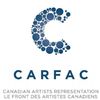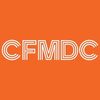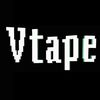note Note générale
Interview with Edward Sharpe: Envisioning VUCAVU.edu
(Cette note n'est disponible qu'en anglais.*)
This note was created as part of interConnect, a collaborative inquiry into digital transformation. Learn more in the box at the end of the text.

Introduction
The following interview with Edward Sharpe was conducted by Ashlee Conery. Both Edward and Ashlee were participants of interConnect’s co-learning group 2.1, and used this brief interview as a way of testing the group’s document designed to help others to carry out interviews, reflect on projects, and build collections of case studies for understanding digital platforms: Interview Questions and Considerations for Digital Platforms.
Edward Sharpe is the Senior Technical Manager at the Canadian Filmmakers Distribution Centre (CFMDC) and a board member of VUCAVU.
Ashlee Conery is the Creator & Project Lead of Cube Commons, a Digital Strategy Funded DAO and streaming platform for the educational materials produced by arts organizations and artists living and working in Northern Turtle Island (Canada).
Interview
Ashlee: What is the purpose of your project?
Edward: To disseminate and promote Canadian Media Art. For historical context, click here.
In an ongoing shift, VUCAVU is transitioning from a strictly Video-on-demand (VOD) model to an exhibition/educational programing platform—VUCAVU.edu—that will facilitate streaming licences with major universities to be part of educational libraries.
Due to changes made by their integrated storage tools, VUCAVU is looking at new structures/software for housing and interacting with their content.
This project is in the process of collaborating with other video distributors to make decisions about how much this should cost. Groups they’ve collaborated with include: Video Pool, the Independent Media Arts Alliance (IMAA), Canadian Artists’ Representation / Le Front des artistes canadiens (CARFAC), Media Arts Network of Ontario (MANO), Canadian Filmmakers Distribution Centre (CFMDC), Winnipeg Film Group, VIVO, Moving Images, Spira, VideoF3M, Groupe Intervention Video (GIV), VTape.
As well, they have consulted with potential users—using grants to consult with outside librarians and universities on what they need. And what they discovered was that they need to be able to work within the MARC (machine-readable cataloguing) system used by university catalogues. So they have done projects and research around MARC records to help define a strategy around video and education in relation to this system.
Online databases that include tools for public engagement, education and exhibitions also blur the lines between what is a platform and what is an organization—VUCAVU, is an early example of this. It was conceived as a platform that then became engaged in projects in a way that looks like an arts organization.
Ashlee: What are some challenges this project has confronted?
Edward: The Canadian Filmmakers Distribution Centre (CFMDC) is always walking a line between encouraging professionalization while at the same time lowering barriers to access—for example, navigating between the file types provided by filmmakers vs. what is required by presenters. In the context of VUCAVU this means a lot of administrative work and money for the scanning of film prints or the digitization of tapes.
There was a process when CFMDC joined VUCAVU and we tried to align the two organizations ‘categories’ (essentially tags) for films, stuff like ‘Ecology’, ‘Dance’, ‘Food’ etc. This proved quite difficult to resolve what the categories would be and also to add categories as required. And Kentico (the CMS VUCAVU uses) cannot add categories easily; therefore this became a barrier to integrating the two databases/organizations, because the needs of each organization have to be compromised.
Ashlee: What would technical and community success look like for VUCAVU.edu?
Edward: I think a sustainable subscription model, which facilitates artists getting paid and is easy for educational institutions to access, is what success looks like.
Ashlee: Can sustainability happen alone or does it depend on collectivity?
Edward: Ideally, all independent distributors need to come together to create one offering that they collectively sustain. In the case of a film that belongs to more than one artist, there needs to be a way that an artist can easily decide (with the click of a button) which organizations get the distribution fee.
Using a collective tool is not homogenizing, we are all able to reach our local communities in ways that are not possible by one large organization. But setting standard rates is already the case with the Canada Council for the Arts (CCA). The platform is just a tool that makes this possible and does not eliminate the need for local video organizations. My hope is that it allows us all to continue to thrive.
About this note
- This note was nurtured by the discussions that took place during interConnect workshops, particularly those of co-learning group 2.1.
- Note authored by Ashlee Conery and Edward Sharpe with revision support from the interConnect team.
The interConnect initiative was led by the Independent Media Arts Alliance (IMAA). The views expressed in this note are those of the author(s) and not official IMAA recommendations.
———
*interConnect était une initiative bilingue. Cependant, en raison de la quantité de contenu créé au cours du projet, et compte tenu des contraintes budgétaires et de la capacité de l'équipe, toutes les notes n'ont pas été traduites.
note Note(s) liée(s)
 19 mars 2024
19 mars 2024
Interview Questions and Considerations for Digital Platforms...
19 mars 2024 25 octobre 2023
25 octobre 2023
Digital Strategy Fund/Fonds Stratégie numérique
25 octobre 2023 25 juillet 2023
25 juillet 2023
interConnect | 2.1. — Co-learning Group /Groupes d’apprentissage...
25 juillet 2023 28 mars 2023
28 mars 2023
interConnect | Project Overview/Aperçu du projet
28 mars 2023 29 mars 2024
29 mars 2024
Finding and Working with Digital Tools in the Visual and Media Arts...
29 mars 2024 26 mars 2024
26 mars 2024
interConnect | 2.1. — Reflections /Réflexions — Building platforms...
26 mars 2024diversity_3Organisation(s) reliée(s)
 5 juin 2023
5 juin 2023
Canadian Artists' Representation / Le Front des artistes canadiens...
5 juin 2023 10 août 2023
10 août 2023
Canadian Filmmakers Distribution Centre (CFMDC)
10 août 2023 29 juin 2023
29 juin 2023
Conseil des arts du Canada / Canada Council for the Arts
29 juin 2023 25 août 2023
25 août 2023
CubeCommons
25 août 2023 3 avril 2023
3 avril 2023
Independent Media Arts Alliance (IMAA) / Alliance des arts...
3 avril 2023 10 août 2023
10 août 2023
Media Arts Network of Ontario / Réseau des arts médiatiques de...
10 août 2023 10 août 2023
10 août 2023
Spira
10 août 2023 10 août 2023
10 août 2023
Video Pool Media Arts Centre
10 août 2023 10 août 2023
10 août 2023
VIVO Media Arts Centre
10 août 2023 10 août 2023
10 août 2023
Vtape
10 août 2023 10 août 2023
10 août 2023
VUCAVU
10 août 2023 10 août 2023
10 août 2023
Winnipeg Film Group
10 août 2023bookmark Terme(s) relié(s)
 12 février 2024
12 février 2024
Organisation autonome décentralisée /Decentralized autonomous...
12 février 2024 14 décembre 2023
14 décembre 2023
Vidéo sur demande (VSD)
14 décembre 2023Carnet(s) relié(s)
 file_copy
19 notes
file_copy
19 notes
Finding and Working with Digital Tools in the Visual and Media Arts Sector...
file_copy 19 notes file_copy
41 notes
file_copy
41 notes
Digital Initiatives in the Broad Visual and Media Arts Sector/Initiatives...
file_copy 41 notesAuteur·trice(s) de note
Contacter les auteur·trice(s)Communauté liée
interConnect
Plus d’informationsPublication
19 mars 2024
Modification
26 mars 2024 21:11
Licence
CC BY-NC-SA, sans utilisation commerciale autorisée - plus d'informations
Attention : une partie ou l’ensemble de ce contenu pourrait ne pas être la propriété de la, du ou des auteur·trices de la note. Au besoin, informez-vous sur les conditions de réutilisation.
Visibilité
public




